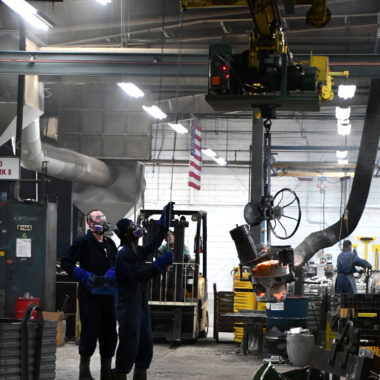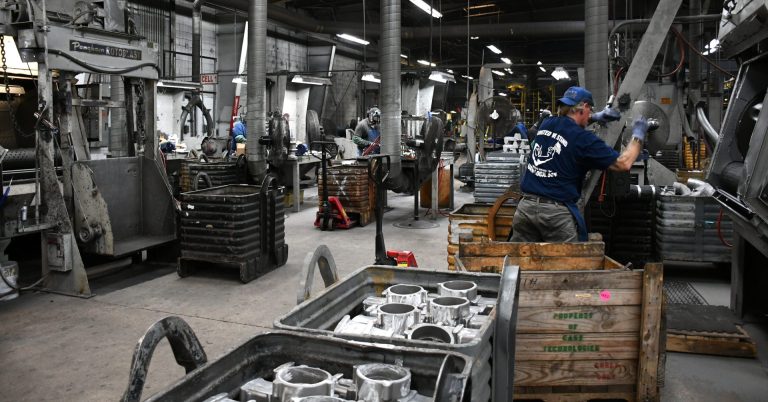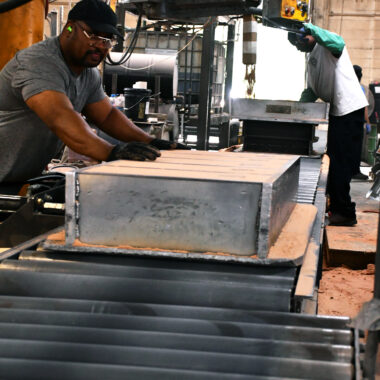About Aluminum Casting Essentials: Every Little Thing You Required to Know
About Aluminum Casting Essentials: Every Little Thing You Required to Know
Blog Article
Crafting Excellence: Just How to Achieve High-Quality Light Weight Aluminum Castings Each Time
In the realm of aluminum casting, the pursuit of excellence is a constant journey that requires a precise strategy and a keen understanding of the intricacies involved. Accomplishing regular premium aluminum castings requires an extensive understanding of the procedures, from picking the suitable alloy to executing accurate mold designs and thoroughly regulating spreading parameters. The real mastery exists in the ability to apply these aspects flawlessly to produce remarkable castings every time. As we check out the intricacies of crafting excellence in light weight aluminum castings, revealing the essential approaches and methods that bring about remarkable outcomes comes to be critical for those making every effort for excellence in this specific area.
Recognizing Light Weight Aluminum Casting Procedures
Light weight aluminum casting procedures, essential in the manufacturing market, include the complex makeover of liquified light weight aluminum right into strong kinds via a collection of carefully controlled steps. Comprehending these procedures is vital to accomplishing high-grade light weight aluminum spreadings continually - about aluminum casting. The key approaches made use of in light weight aluminum casting are die casting, sand spreading, and financial investment spreading

Each of these processes has its advantages and is chosen based on elements like complexity, volume, and preferred surface of the light weight aluminum spreading. about aluminum casting. Recognizing the intricacies of these approaches is essential for producers aiming to create premium light weight aluminum spreadings constantly
Selecting the Right Aluminum Alloy
Picking the ideal aluminum alloy is a crucial decision in the manufacturing of high-grade light weight aluminum castings. When selecting an aluminum alloy for casting, it is crucial to consider the certain requirements of the application to ensure optimum efficiency.
One of the most commonly used light weight aluminum alloys for spreading is A356 - about aluminum casting. For applications needing high toughness, 7075 aluminum alloy is a prominent choice due to its exceptional strength-to-weight ratio.
In addition to mechanical residential or commercial properties, factors to consider such as price, availability, and post-casting procedures should also affect the choice of the right light weight aluminum alloy. By very carefully examining these aspects, suppliers can make certain the production of top notch light weight aluminum castings that fulfill the wanted specs.
Executing Correct Mold Layout
Establishing an efficient mold and mildew layout is important for making certain the effective manufacturing of top notch aluminum castings. Appropriate mold style plays a significant useful reference role in attaining the wanted qualities of the end product. To implement a successful mold design, factors such as material circulation, cooling down prices, and component geometry must be meticulously considered.
One key element of mold design is guaranteeing proper dental filling and solidification of the aluminum within the mold and mildew tooth cavity. This involves creating runner and gating systems that help with smooth metal circulation and stop issues such as air entrapment or incomplete filling. Additionally, including cooling networks right into the mold and mildew design helps control solidification prices and lower the danger of porosity or contraction issues.

Controlling Casting Parameters

Ensuring Post-Casting Top Quality Checks
To preserve the high quality of light weight aluminum spreadings, extensive post-casting quality checks are crucial. After the casting procedure is completed, it is essential to make certain that the final items meet the desired standards and specifications.
Dimensional precision is another important element that should be validated during post-casting quality checks. Dimensions of crucial dimensions and tolerances must be taken to validate that the castings satisfy the needed requirements. Furthermore, mechanical homes such as hardness, tensile toughness, and effect resistance may need to be reviewed through material testing to guarantee that the spreadings possess the needed toughness and toughness for their designated application.
Verdict
Finally, achieving high-quality light weight aluminum spreadings requires a comprehensive understanding of the spreading procedures, picking the appropriate alloy, developing mold and mildews efficiently, controlling spreading parameters carefully, and carrying out post-casting quality checks diligently. By complying with these steps, makers can continually create aluminum spreadings that meet the highest requirements of high quality and efficiency.
Attaining regular premium aluminum castings requires an extensive grasp of the procedures, from selecting the appropriate alloy to performing exact mold layouts and thoroughly managing casting criteria. The main methods used in aluminum spreading are die spreading, sand casting, and financial investment spreading.
Investment spreading, also recognized as accuracy casting, involves producing wax patterns that are covered in ceramic to develop mold and mildews.Selecting the ideal aluminum alloy is a critical decision in the production of top quality aluminum castings.Ensuring accurate control over spreading specifications is vital for keeping uniformity and high quality in light weight aluminum casting manufacturing.
Report this page